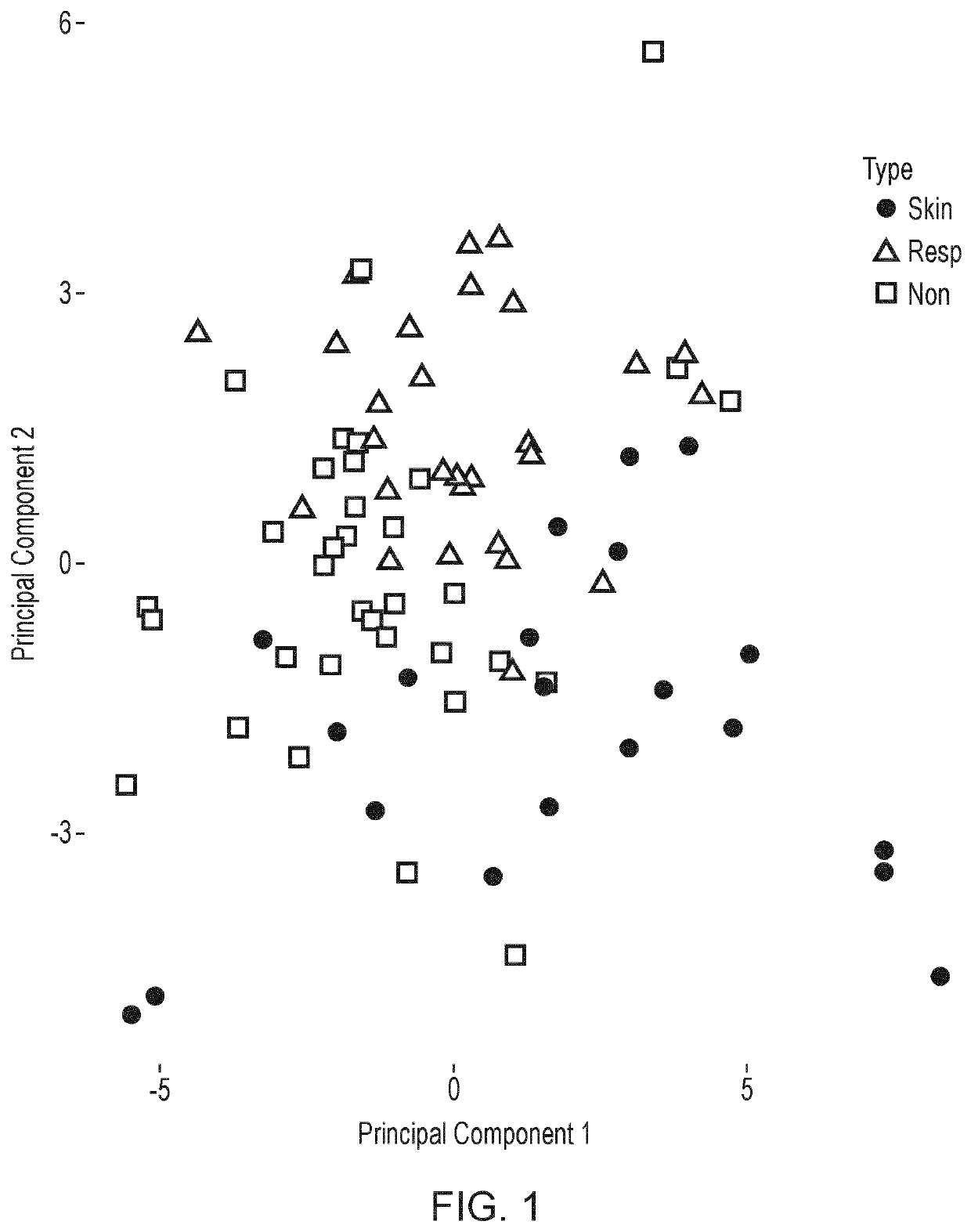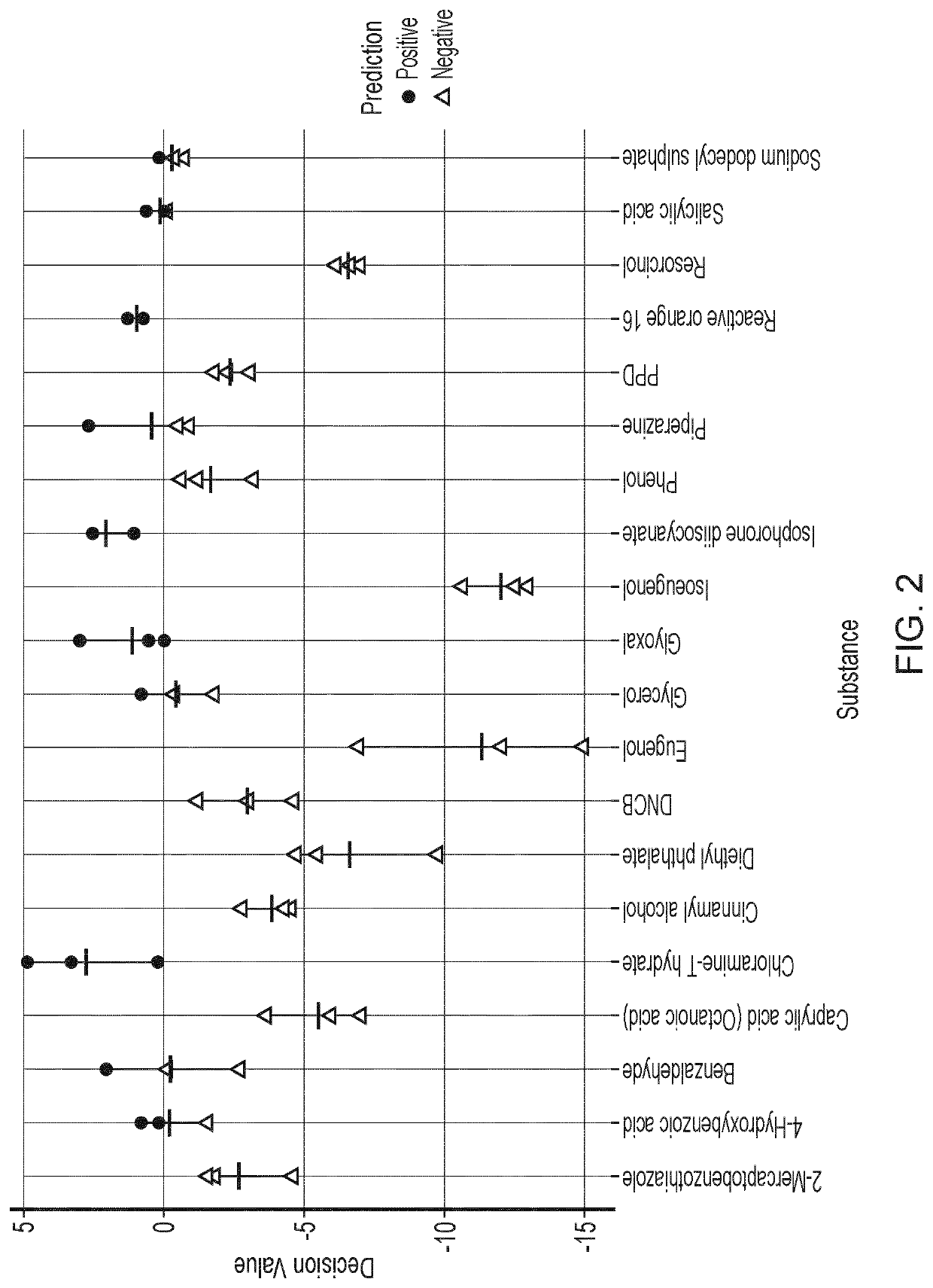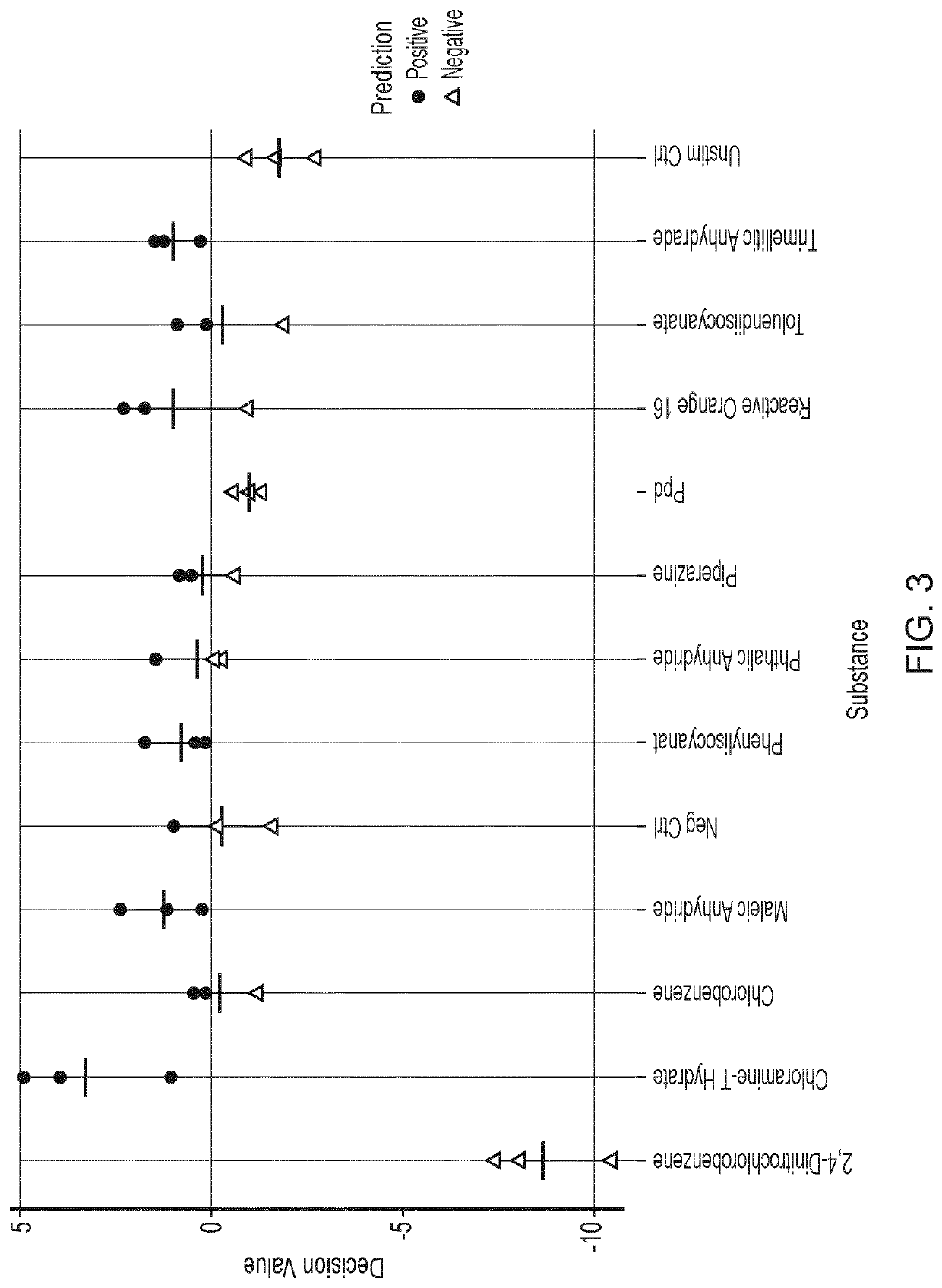Analytical methods and arrays for use in the same
- Summary
- Abstract
- Description
- Claims
- Application Information
AI Technical Summary
Benefits of technology
Problems solved by technology
Method used
Image
Examples
Embodiment Construction
Results
Prediction Model Rationale
[0245]GARD™ is a state-of-the-art methodology platform for assessment of chemical sensitizers. It is based on a dendritic cell (DC)-like cell line, thus mimicking the cell type involved in the initiation of the response leading to sensitization. Cultivated DCs are exposed to test substances of interest. Following incubation, exposure-induced transcriptional changes are measured in order to study the activation state of the cells. These changes are associated with the bridging of innate and adaptive immune responses and the decision-making role of DCs in vivo and constitutes of e.g. up-regulation of co-stimulatory molecules, induction of cellular and oxidative stress pathways and an altered phenotype associated with migratory and inter-cell communication functions. By using state-of-the-art gene expression technologies, high informational content data is generated, that allows the user to get a holistic view of the cellular response induced by the tes...
PUM
| Property | Measurement | Unit |
|---|---|---|
| Time | aaaaa | aaaaa |
| Length | aaaaa | aaaaa |
| Fluorescence | aaaaa | aaaaa |
Abstract
Description
Claims
Application Information
 Login to View More
Login to View More - R&D
- Intellectual Property
- Life Sciences
- Materials
- Tech Scout
- Unparalleled Data Quality
- Higher Quality Content
- 60% Fewer Hallucinations
Browse by: Latest US Patents, China's latest patents, Technical Efficacy Thesaurus, Application Domain, Technology Topic, Popular Technical Reports.
© 2025 PatSnap. All rights reserved.Legal|Privacy policy|Modern Slavery Act Transparency Statement|Sitemap|About US| Contact US: help@patsnap.com



